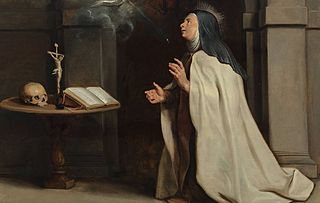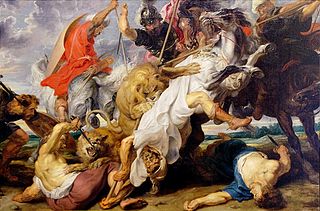Related Research Articles
The Slade Professorship of Fine Art is the oldest professorship of art and art history at the universities of Cambridge, Oxford and University College, London.

The Warburg Institute is a research institution associated with the University of London in central London, England. A member of the School of Advanced Study, its focus is the study of cultural history and the role of images in culture – cross-disciplinary and global. It is concerned with the histories of art and science, and their relationship with superstition, magic, and popular beliefs.
Michael David Kighley Baxandall, FBA was a British art historian and a professor emeritus of Art History at the University of California, Berkeley. He taught at the Warburg Institute, University of London, and worked as a curator at the Victoria and Albert Museum. His book Painting and Experience in Fifteenth-Century Italy was profoundly influential in the social history of art, and is (2018) widely used as a textbook in college courses.
Otto Kurz FBA was a historian and Slade Professor of Fine Art, University of Oxford.
David Freedberg is Pierre Matisse Professor of the History of Art and Director of the Italian Academy for Advanced Studies in America at Columbia University. He was also Director of the Warburg Institute at the University of London from July 2015 to April 2017.
Svetlana Leontief Alpers is an American art historian, also a professor, writer and critic. Her specialty is Dutch Golden Age painting, a field she revolutionized with her 1984 book The Art of Describing. She has also written on Tiepolo, Rubens, Bruegel, and Velázquez, among others.

Sir Peter Paul Rubens was a Flemish artist and diplomat. He is considered the most influential artist of the Flemish Baroque tradition. Rubens's highly charged compositions reference erudite aspects of classical and Christian history. His unique and immensely popular Baroque style emphasised movement, colour, and sensuality, which followed the immediate, dramatic artistic style promoted in the Counter-Reformation. Rubens was a painter producing altarpieces, portraits, landscapes, and history paintings of mythological and allegorical subjects. He was also a prolific designer of cartoons for the Flemish tapestry workshops and of frontispieces for the publishers in Antwerp.

The Torre de la Parada is a former hunting lodge that was located in present-day Monte de El Pardo in Fuencarral-El Pardo, near the Royal Palace of El Pardo, some way outside Madrid in the Sierra de Guadarrama. It was mostly destroyed by fire when taken in 1714 by Austrian troops in the War of Spanish Succession, though the ruins remain.
Fritz Grossmann, art historian. Born 26 June 1902 in Stanislau,, now Ivano-Frankivsk in the Ukraine, died 16 November 1984, Croydon, London) was an Austrian-British art historian.

Michel Lasne, was a French engraver, draughtsman and collector.

Marinus Robyn van der Goes or Marinus van der Goes was a Flemish engraver. He was active as a reproductive engraver after the works of Flemish and Dutch designers.

Portrait of a Commander or A Commander Being Dressed for Battle is a portrait of an unknown man in plate armour, by Peter Paul Rubens. In July 2010 it was sold for £9 million by Christie's after Sotheby's turned it down, suspecting its authenticity as a Rubens. In December 2011, the portrait was placed on loan with the Metropolitan Museum of Art in New York.

Saint Teresa of Ávila's Vision of the Holy Spirit is a 1612-1614 painting by Peter Paul Rubens. It is now in the Museum Boijmans Van Beuningen in Rotterdam.

Hercules's Dog Discovers Purple Dye or The Discovery of Purple by Hercules's Dog is an oil painting by Flemish artist Peter Paul Rubens painted circa 1636, towards the end of his career. It depicts the mythical discovery of Tyrian purple by Hercules and his dog, and was one of dozens of oil on panel sketches made by Rubens for the decoration of the Torre de la Parada in Spain. A completed painting based on Rubens's sketch was made by Theodoor van Thulden in 1636–1638, and is now held by the Prado Museum.

The Lion Hunt is a 1621 painting by Peter Paul Rubens, now held in the Alte Pinakotheek in Munich. It shows two lions attacked by hunters on horseback and on foot. It marks the end of an intensive creative phase for Rubens centered on the theme of hunting. It has the dimensions of 377 by 249 cm
Jennifer Iris Rachel Montagu is a British art historian with emphasis in the study of Italian Baroque sculpture.
Josephine Dawn Adès,, also known as Dawn Adès, is a British art historian and academic. She is professor emeritus of art history and theory at the University of Essex.
Alfred Scharf was a German-born British art historian.

Saint Teresa of Ávila's Vision of the Holy Spirit is an oil on panel painting of Teresa of Avila by Peter Paul Rubens, executed c. 1614, now in the Fitzwilliam Museum in Cambridge, to which it was allocated by the UK Government in 1999 after being accepted in lieu of inheritance tax. It is one of three versions Rubens produced of the subject, the others are in Rotterdam and a private collection.
Gregory Martin is a British art historian. As one of the world's leading experts on Rubens, he is on the editorial board of the Rubenianum, Antwerp. He has been entrusted with cataloguing the Flemish School paintings of the Rijksmuseum, Amsterdam. Martin started his career as a curator at the National Gallery, London, before joining Christie's, where he subsequently headed the Old Masters Department, employing Paul Raison and Anthony Crichton-Stuart.
References
- 1 2 3 "McGrath, Prof. Elizabeth". Who's Who 2018 . Oxford University Press. 1 December 2017. doi:10.1093/ww/9780199540884.013.25688.
{{cite web}}: Missing or empty|url=(help) - 1 2 3 "Professor Elizabeth McGrath". The British Academy. Retrieved 9 March 2018.
- ↑ "Slade Professorship of Fine Art" (PDF). University of Oxford. 18 June 2010. Archived from the original (PDF) on 25 April 2013. Retrieved 9 March 2018.
- ↑ "Elizabeth McGrath". The Warburg Institute. School of Advanced Study. Retrieved 9 March 2018.